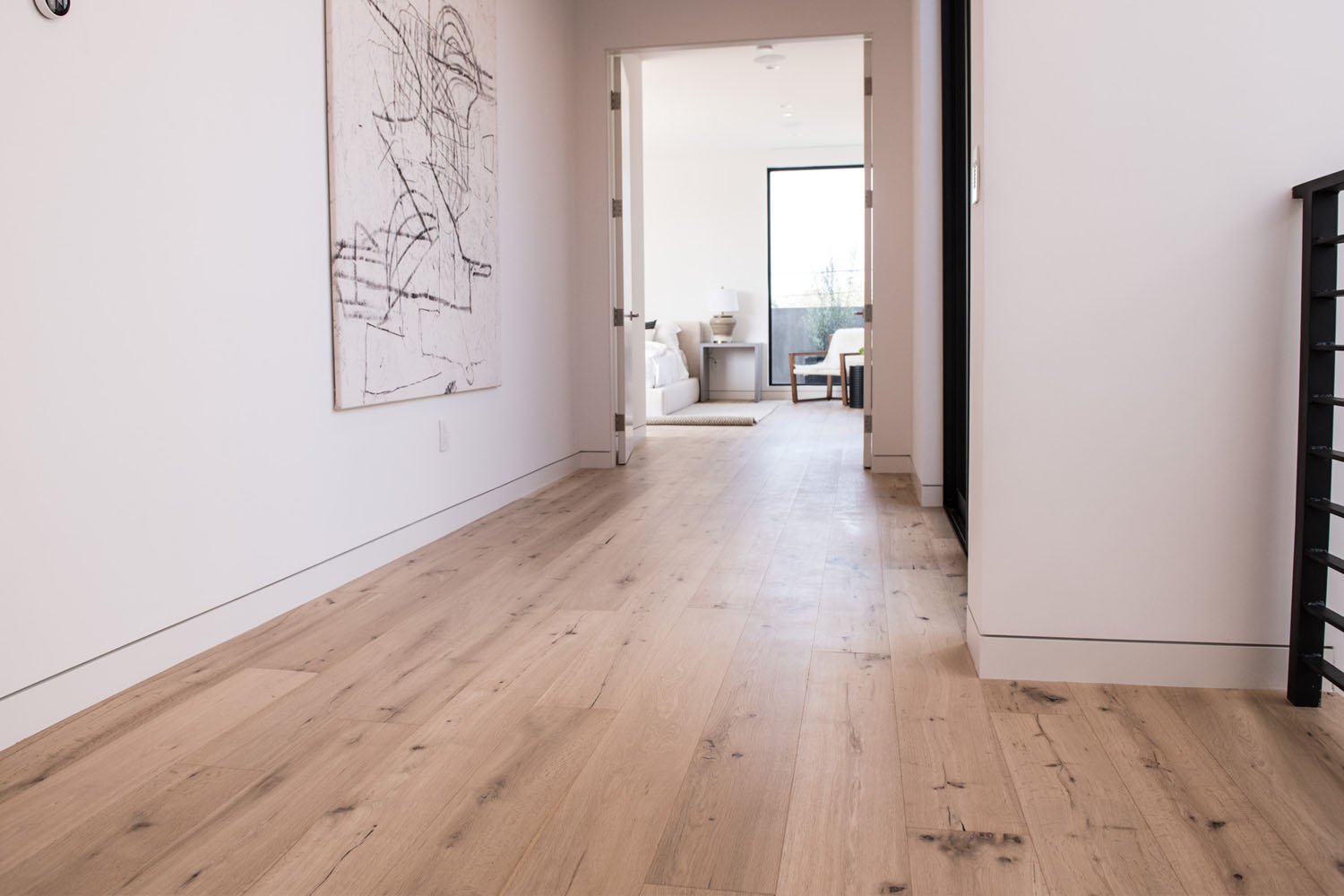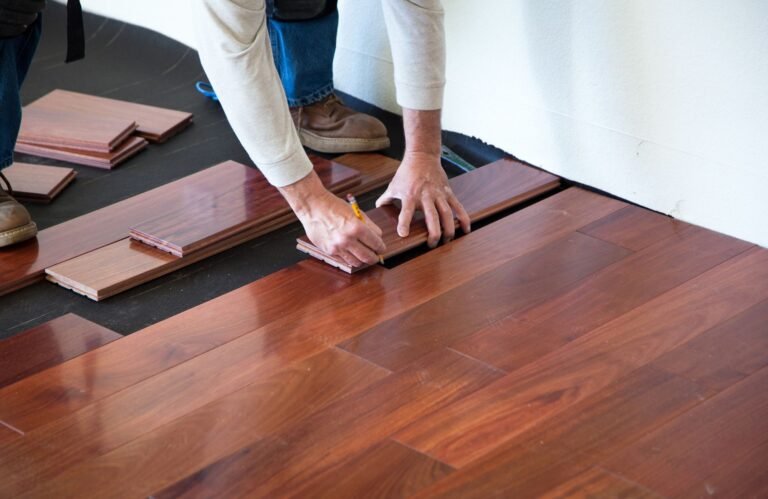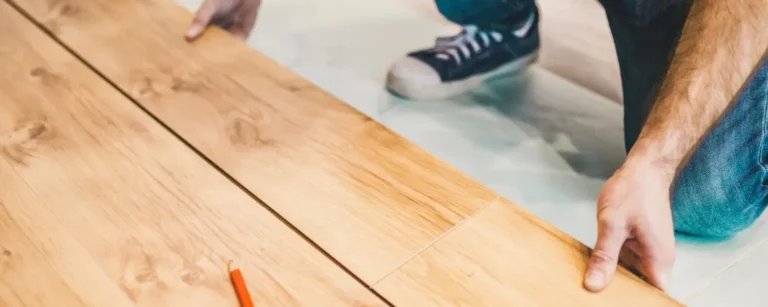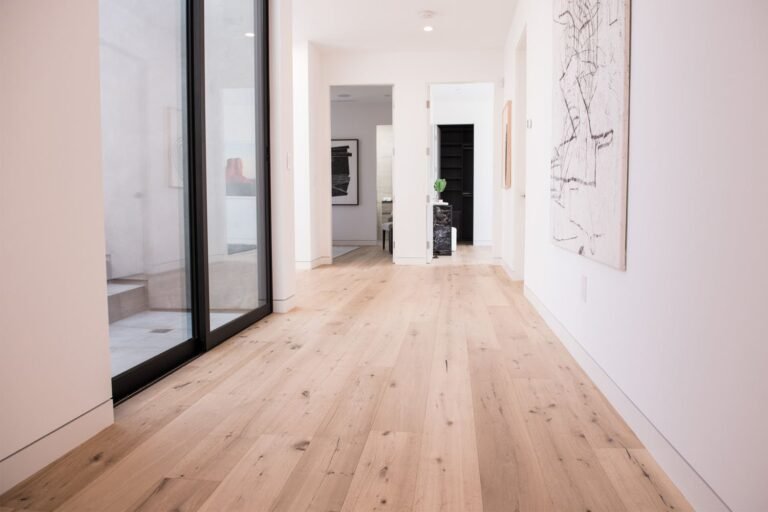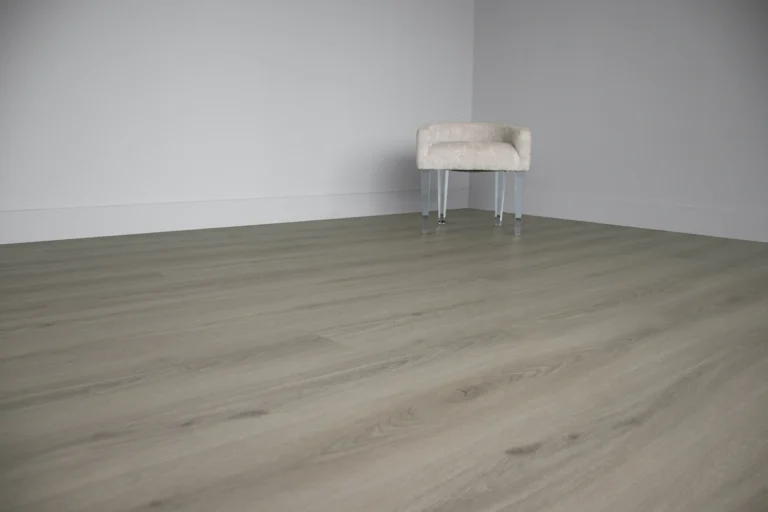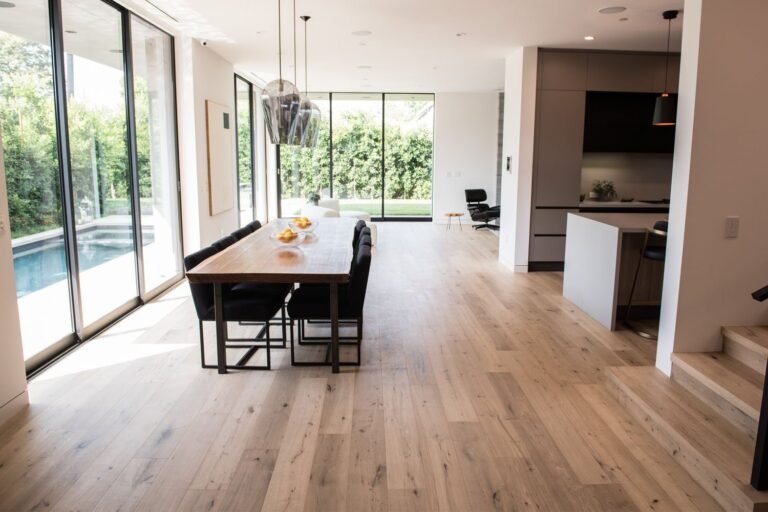Which is Better: Engineered Hardwood Floors vs Laminate Flooring?
Confusion often arises when deciding between engineered hardwood floors vs laminated flooring to upgrade your home’s aesthetics. This article explores the differences and advantages of each flooring type, guiding you toward the most suitable choice for your needs.
What is Engineered Hardwood Flooring?
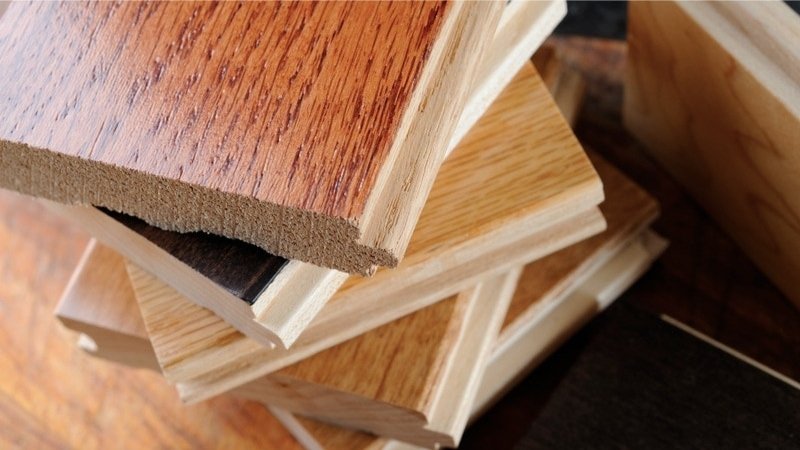
Engineered hardwood floors are a remarkable type of wood flooring that combines multiple layers to enhance stability and durability without compromising the aesthetic appeal of real hardwood. It provides the same exquisite look and feel as traditional hardwood floors while being more resistant to moisture, temperature variations, and humidity.
Learn more about engineered hardwood flooring in our in-depth post, “What is Engineered Hardwood Flooring?“
Layers of Engineered Hardwood Floors
Engineered hardwood flooring comprises multiple layers designed to enhance stability and durability while retaining the inherent beauty of real wood. Usually, engineered hardwood has three main layers:
- Top Wear Layer: This is the uppermost layer of the engineered hardwood plank, comprising genuine hardwood veneer. Its thickness ranges from 0.6 to 6 millimeters. This layer imparts engineered hardwood with its authentic wood appearance.
- Core Layer: The core layers, located beneath the top wear layer, consist of plywood, high-density fiberboard (HDF), or a combination of these materials. These materials provide stability and strength to the flooring, keeping it flat and resistant to warping or cupping caused by changes in temperature and humidity.
- Bottom Base Layer: The bottom layer, also known as the backing layer, is the foundation for the engineered hardwood plank. Manufacturers typically construct it using plywood or another stabilizing material, which provides additional support and enhances moisture resistance.
What is Laminated Flooring?
Laminate flooring is a synthetic product designed to resemble the look of hardwood, tile, or stone. Manufacturers create it by connecting multiple layers through a lamination process. People appreciate laminate flooring for its affordability, ease of installation, and low maintenance requirements.
Layers of Laminated Flooring
Laminate flooring connects multiple layers through a lamination process, with each layer serving a specific function in providing durability, stability, and aesthetic appeal. The layers of laminated flooring, arranged from top to bottom, include:
- Wear Layer: The wear layer resists wear, scratches, and stains on laminate flooring. It comprises a clear, protective material such as aluminum oxide or melamine resin.
- Decorative Layer: Below the wear layer, the decorative layer displays a high-resolution image of wood, tile, or stone. This layer creates the desired appearance of the laminate, imitating natural materials such as hardwood, ceramic, or marble.
- Core Layer: The core layer adds stability and structural integrity to the laminate flooring. It consists of HDF or particleboard, known for its strength and dimensional stability.
- Backing Layer: The backing layer at the bottom of the laminate flooring provides additional support and stability, helping prevent warping or buckling.
Engineered Hardwood Floors Vs Laminate Flooring
| Parameters | Engineered Hardwood | Laminated Flooring |
| Appearance | Real wood veneer with natural variation in grain and color. | Imitates the appearance of wood, tile, or stone with a printed decorative layer. Limited variation. |
| Cost | Generally more expensive upfront due to real wood veneer. Installation costs vary. | More affordable upfront due to synthetic materials. Installation costs tend to be lower. |
| Size | Engineered hardwood boards are available from 2 ¼ to 7 inches in width and 36 to 48 inches in length. | Laminated flooring planks are available from 3 to 7 inches in width and 48 inches in length |
| Installation | Can be nailed, glued, or floated depending on the subfloor and type of engineered hardwood. | Can be installed as a floating floor with click-lock or glueless installation systems |
| Durability | Prone to scratching and denting. Durability depends on the thickness of the wear layer. | Resistant to scratching and denting. The wear layer protects against daily wear and tear. |
| Lifespan | Can last for more than 30 years with proper care and maintenance. | Generally has a shorter lifespan than hardwood |
| Environmental Impact | Uses real wood veneer but can be recycled | Made of synthetic materials but hard to recycle. |
| Maintenance | Requires regular cleaning and maintenance. Can be refinished to restore its appearance. | Easy to clean with regular sweeping and occasional mopping. Cannot be refinished. |
Keep reading this blog to understand the difference between these flooring choices.
Appearance
Engineered Hardwood
It provides a natural and authentic wood appearance, showcasing the genuine beauty of wood with its real wood veneer. It also displays unique grain patterns and color variations inherent to different wood species.
Laminated Flooring
It replicates the appearance of various materials such as wood, tile, or stone by utilizing a printed decorative layer, creating a uniform look across the floor.
Which is the best? Engineered Hardwood Floors vs Laminate Flooring
The choice between engineered hardwood and laminated flooring for appearance ultimately depends on personal preference and the desired aesthetic. However, engineered hardwood provides a genuine wood look with its natural characteristics, enhancing your home’s premium appearance.
Cost
Engineered Hardwood
Engineered hardwood tends to be more expensive than laminated flooring. It incorporates real wood veneer in its construction, which adds to its cost. The average cost of engineered hardwood ranges from $6 to $21 per square foot.
Laminated Flooring
Laminate flooring is generally more affordable than engineered hardwood because laminated flooring comprises synthetic materials, often less expensive than real wood. The average cost of laminated flooring ranges from $3 to $8 per square foot.
Which is the best? Engineered Hardwood Floors vs Laminate Flooring
The best choice between engineered hardwood and laminated flooring depends on individual preferences and budget considerations. But if the high upfront cost is fine for you, consider engineered hardwood, as it is durable and offers the natural beauty of real wood.
Learn about the factors affecting the cost of Engineered Hardwood Flooring in our in-depth article “How much does Engineered Hardwood Flooring Cost?”
Size
Engineered Hardwood
Engineered hardwood flooring offers flexibility in design and installation. Its various plank sizes and thickness allow for customization according to the space and desired aesthetic. Engineered hardwood is available from 2 ¼ to 7 inches in width and 36 to 48 inches in length.
Laminated Flooring
Laminated flooring also comes in various sizes and dimensions. However, it offers only a limited range of options. Typically, laminated flooring is available in widths ranging from 3 to 7 inches and lengths of 48 inches.
Which is the best? Engineered Hardwood Floors vs Laminate Flooring
Factors such as space specifications and requirements are important when determining the best option. However, engineered hardwood offers more versatility in size and thickness, allowing for greater customization.
Installation
Engineered Hardwood
We can install the engineered hardwood using nail-down, glue-down, or floating installation methods. Each method offers flexibility depending on the project’s requirements and the subfloor’s condition.
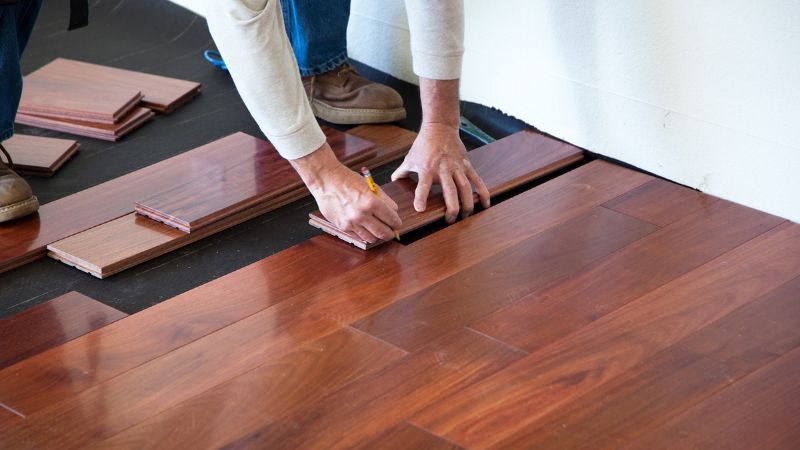
Laminated Flooring
The floating floor method installs laminated flooring by interlocking planks through a click-lock or glueless installation system. This method allows for quick and easy installation without adhesives or fasteners. We can easily install it over various subfloors, making it suitable for DIY projects.
Which is the best? Engineered Hardwood Floors vs Laminate Flooring
Both offer different installation options to accommodate various needs, but engineered hardwood provides more installation options.
Durability
Engineered Hardwood
Engineered hardwood is prone to scratching and denting, especially in high-traffic areas. However, its durability depends on the thickness of the top wear layer. Thicker wear layers provide better resistance to scratches and dents, thus increasing the flooring’s lifespan.
Laminated Flooring
Laminated flooring is generally more resistant to scratching and denting than engineered hardwood. The wear layer protects the decorative layer underneath. However, excessive moisture exposure can cause the edges of laminate planks to swell, potentially leading to damage.
Which is the best? Engineered Hardwood Floors vs Laminate Flooring
Laminated flooring tends to provide superior resistance against scratches and dents. Nevertheless, repairing laminate flooring can be challenging,as it may necessitate replacing the whole flooring if a section becomes damaged. Therefore, opting for engineered flooring is a better choice.
Lifespan
Engineered Hardwood
Engineered hardwood flooring is durable and can last many years with proper care and maintenance. Its average lifespan is 30 years, but it can last even longer. Furthermore, you can sand down engineered hardwood to remove scratches and restore its appearance.
Explore further the lifespan of Engineered Hardwood Flooring in our comprehensive post, “How Long Does Engineered Hardwood Last?“
Laminated Flooring
Laminated flooring has a much shorter lifespan, typically lasting only 10 to 20 years. Additionally, it does not offer the option to sand out scratches and restore its appearance.
Which is the best? Engineered Hardwood Floors vs Laminate Flooring
Engineered wood flooring outlasts laminate flooring with a lifespan of 30 years or more and the capability for sanding down and refinishing.
Environmental Impact
Engineered Hardwood
Engineered hardwood uses hardwood in its construction, but we can reclaim or reuse it for different purposes, reducing its environmental impact.
Laminated Flooring
Laminated flooring is made of synthetic materials, making it environmentally friendly. However, recycling can be challenging and may end up in landfills.
Which is the best? Engineered Hardwood Floors vs Laminate Flooring
Both flooring options offer distinct advantages in terms of environmental impact. However, engineered hardwood has a slight advantage because it can be recycled or reused for various purposes.
Maintenance
Engineered Hardwood
Regular maintenance is necessary to preserve the appearance and extend the lifespan of engineered hardwood flooring. You need to clean it regularly to remove dirt and debris and occasionally refinish it to repair scratches and restore its protective finish. Proper maintenance can effectively eliminate issues such as scratches and dents, which engineered hardwood can be sensitive to.
Laminated Flooring
Maintaining laminated flooring is relatively easy compared to engineered hardwood. You only need to sweep it regularly and occasionally mop it to keep it clean. Unlike engineered hardwood, laminated flooring does not require refinishing because its synthetic construction does not allow sanding.
Which is the best? Engineered Hardwood Floors vs Laminate Flooring
Engineered hardwood requires more maintenance effort, including refinishing, but offers the natural beauty of real wood and a longer lifespan. Conversely, laminated flooring is easier to clean and maintain. However, it lacks engineered hardwood’s authentic wood appearance and has a shorter lifespan.
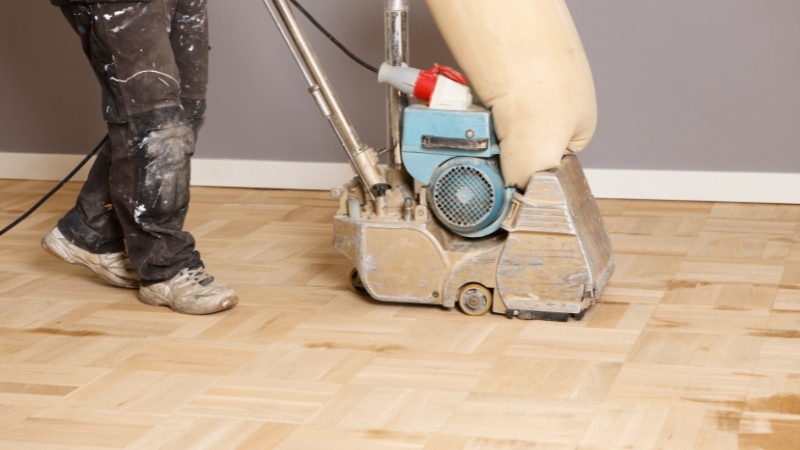
Is Engineered Hardwood Better than Laminate? Or is Laminate Better?
Both of these flooring options offer unique benefits. Engineered hardwood, which consists of real wood veneer over layers of composite materials, provides a more authentic look and feel. It adds warmth to the space and enhances its aesthetic appeal. Furthermore, engineered hardwood is highly durable and long-lasting, making it a reliable investment for homeowners seeking a flooring option that can withstand the test of time. Although laminate flooring may offer certain conveniences, such as affordability and resistance to moisture and scratches, the authenticity and longevity of engineered hardwood make it a better option.
Add Engineered Hardwood and Upgrade Your Home’s Aesthetics
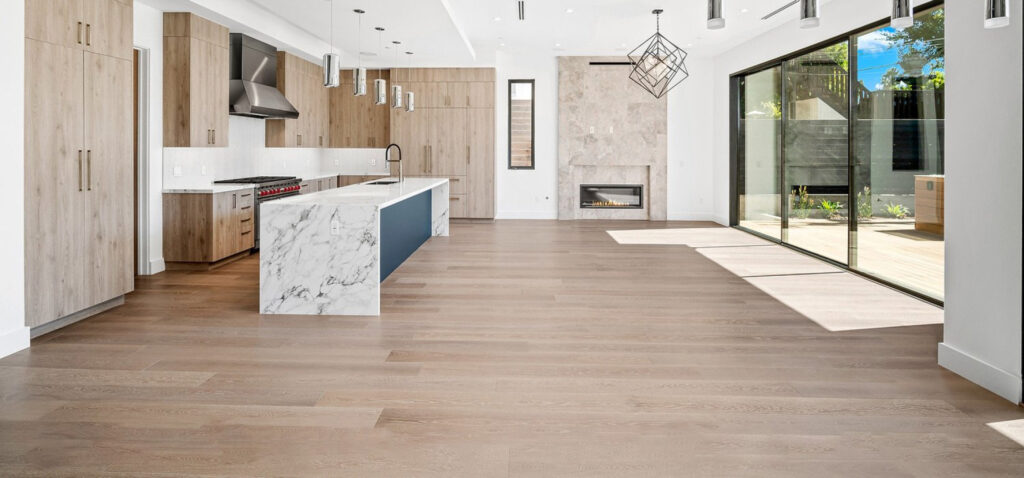
When comparing engineered hardwood and laminate flooring, it becomes evident that both options have their advantages. However, engineered hardwood outshines by offering an authentic look, feel, durability, and long-term value. Homeowners can appreciate its unique flooring option due to its ability to withstand the test of time and undergo multiple refinishing processes.
At Villagio Wood Floors, we understand the importance of quality and aesthetics in transforming your living spaces. As a wholesaler, we offer a wide range of premium engineered hardwood flooring options, combining timeless elegance with modern durability. Come and experience the discovery of your perfect flooring solution with us.
Engineered Hardwood Floors vs Laminate FAQs
What are the Cons of Laminated Flooring?
Laminated flooring has several drawbacks. One significant drawback is that it lacks the authentic look and feel of real hardwood due to its synthetic composition. Additionally, laminated flooring does not allow for refinishing like real hardwood, which limits its lifespan and potential for restoration.
Is Engineered Hardwood Better Resale Value than Laminated?
In general, engineered hardwood has better resale value than laminated flooring. Potential buyers often prefer the aesthetic appeal of real wood, making engineered hardwood more desirable.
Does Engineered Hardwood Add Value to Your Home?
Yes, engineered hardwood can add value to your home. Its authentic look, feel, durability, and longevity make it an attractive feature for potential buyers.
Does Laminated Flooring Devalue a House?
While laminated flooring may not necessarily devalue a house, it can impact its marketability and appeal to certain buyers. Some potential buyers looking for high-end finishes may be discouraged by laminated flooring, as people often perceive it as more budget-friendly than real hardwood or engineered hardwood.

